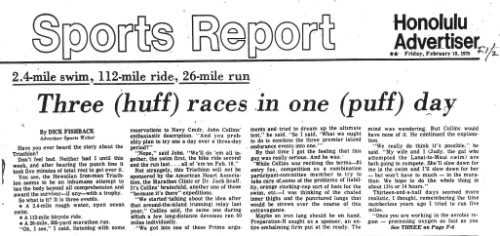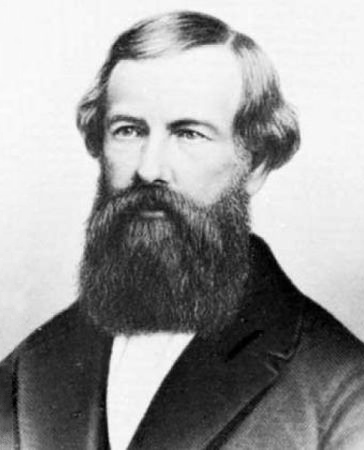The Meatball or the Worm – which would you choose?
What is great graphic design?
As with many things, it would appear that beauty is in the eye of the beholder. What the design industry sees as best practice may not always appeal to the people for whom that design has been created.
The story of the Meatball and the Worm, two NASA logos, is a perfect example.
The original NASA logo was a blue circle inscribed with “NASA” in a heavy serif font as well as a rocket, a sprinkling of stars and a curving red arrow. It was a mess by graphic design standards, hard to reproduce, difficult to scale and a bit of a mess. It was known affectionately as the ‘Meatball’.
In 1974, the Federal Graphics Improvement Program kicked off. It was an ambitious effort to revamp, update and improve the visual identity of a wide range of government agencies. One of the agencies to issue a brief was NASA.
Richard Danne and Bruce Blackburn, founders of New York design studio Danne & Blackburn, decided to respond. Their design recommendations centred on a red typographical logo, with smooth, thick lettering and crossbar-less A’s which were created to be reminiscent of rocket nosecones.
It was to win them the contract, and the flowing logo was adopted as the official identity. It was known as the ‘Worm’. 
Danne & Blackburn went on to create a broader document called the NASA Graphics Standards Manual. It outlined how the logo and the rest of the graphics system should be implemented on everything from spaceships to stationery. It is seen as a classic of its type, and many in the graphics industry believe it still has a lot to teach people about design and branding.
Despite the design industry’s acclaim for the manual and the logo itself, there was one problem with the smart, modern, clean design many, if not most, of NASA’s employees hated it.
Danne recalls, in his memoirs, a now-famous exchange between James Fletcher, NASA’s administrator at the time, and his deputy George Low during an early presentation of the graphics system:
Fletcher: I’m simply not comfortable with those letters, something is missing.
Low: Well yes, the cross stroke is gone from the letter A.
Fletcher: Yes, and that bothers me.
Low: Why?
Fletcher, after a long pause: I just don’t feel we are getting our money’s worth!
The Worm was a hard sell to an organisation that was full of engineers, not designers. NASA employees couldn’t care less about kerning and colour swatches, they like the more homely straightforward depiction of what NASA did.
Design critic Alice Rawsthorn explained the different reactions in her essay ‘The Art Of The Seal,’ “If the meatball shows us what made NASA so thrilling — rockets, planets and sexy-sounding hypersonic stuff — the worm simply suggests it, and does so with such skill that it’s become the design purists’ favourite.”
Over the following two decades, the new logo was applied more and more consistently, however it wasn’t the most illustrious of times for NASA. It went from the glory days of moon landings and the “giant leap for mankind” to Skylab, the shuttle program, and the Challenger disaster.
By the early 1990s, many felt it was time that NASA needed another overhaul to lift things internally and raise public perceptions.
This time, there was to be no brief.
 It was in 1992 and the new NASA administrator Daniel Goldin was paying a visit to Virginia’s Langley Research Centre.
It was in 1992 and the new NASA administrator Daniel Goldin was paying a visit to Virginia’s Langley Research Centre.
As a centre of the old school it was perhaps not surprising that the Langley’s hangars had somehow avoided the design ‘police’ and so retained the pre-1975 NASA logo, the red, white, and blue ‘meatball’.
Langley’s director, Paul Holloway, never a fan of the worm, saw an opportunity. As Goldin recalled to The New York Times, “He said, ‘If you want to really excite NASA employees about changes coming, why don’t you tell them we’re going to de-worm NASA and bring back the meatball?’”
A White House official was traveling with the party and Goldin asked him whether he could, indeed, just re-‘meatball’ the space agency. The answer was ‘Yes’.
So, in an address to Langley employees, Goldin announced the change: NASA was bringing back the meatball.
“They went wild,” Goldin says. “It was an incredible reaction.”
Which is why the NASA went backwards to signal its intent to move forward again and in doing so made its employees happy again.






 She began sewing pads into run shorts, experimenting with swim fabrics, attaching run singlets to bike shorts and eventually created one and two–piece uniforms. She started selling them to the small but growing number of triathletes and set up shop in a space above Huggo’s, the famous restaurant and hangout for many of the triathletes and surfers on Hawaii.
She began sewing pads into run shorts, experimenting with swim fabrics, attaching run singlets to bike shorts and eventually created one and two–piece uniforms. She started selling them to the small but growing number of triathletes and set up shop in a space above Huggo’s, the famous restaurant and hangout for many of the triathletes and surfers on Hawaii.




 Otis is still the world’s leading lift company and it has installed elevators in some of the world’s most famous structures, including the Eiffel Tower, Empire State Building, the original World Trade Center, The Twilight Zone Tower of Terror, Petronas Twin Towers, Burj Khalifa, CN Tower and the Skylon Tower.
Otis is still the world’s leading lift company and it has installed elevators in some of the world’s most famous structures, including the Eiffel Tower, Empire State Building, the original World Trade Center, The Twilight Zone Tower of Terror, Petronas Twin Towers, Burj Khalifa, CN Tower and the Skylon Tower.